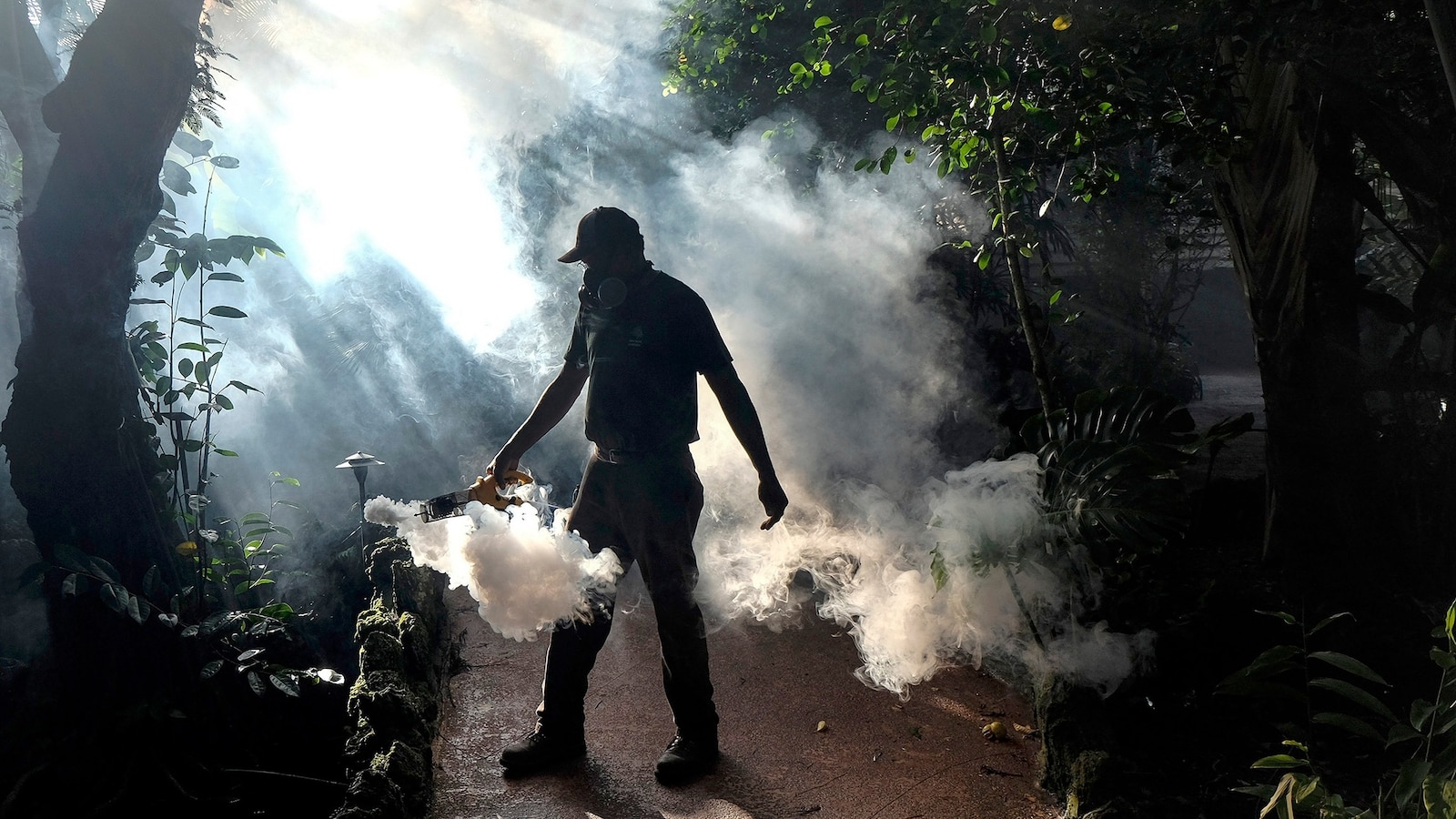Spring Awakening: Are Disease-Vectoring Pests Set to Swarm Major US Cities?
As the chill of winter recedes and the days grow longer, the arrival of spring brings with it not just the blooming of flowers and the chirping of birds, but also a potential surge in disease-vectoring pests across major US cities. Public health experts are ringing alarm bells, warning that warmer weather may create ideal conditions for a variety of pests known to transmit diseases. Understanding the factors contributing to this impending pestilence is crucial for residents, city planners, and public health officials alike.
The Impact of Climate Change
One significant factor influencing the population dynamics of disease-vectoring pests is climate change. As temperatures rise, many species of mosquitoes, ticks, and other pests are expanding their ranges, leading to increased encounters with humans. For instance, the Aedes aegypti mosquito, a known carrier of dengue fever and Zika virus, has been moving northward due to warmer climates, having already established populations in cities such as Miami and Houston.
- **Rising Temperatures:** Higher average temperatures can speed up the life cycle of pests, resulting in larger populations.
- **Increased Precipitation:** Heavy rainfall can create standing water, which serves as breeding grounds for mosquitoes.
- **Urban Heat Islands:** Cities tend to be warmer than rural areas, making urban environments particularly hospitable to pests.
Common Disease-Vectoring Pests
As spring awakens, various pests pose significant health risks. Here are some of the most concerning:
- Mosquitoes: Known carriers of West Nile virus, Zika virus, and malaria, mosquitoes thrive in warm, humid conditions. Their populations can explode in urban areas with inadequate drainage.
- Ticks: Species like the black-legged tick are responsible for Lyme disease. Warmer winters have allowed ticks to survive in regions where they previously could not.
- Rodents: While not insects, rodents like rats and mice can also spread diseases such as hantavirus and leptospirosis, especially in densely populated urban environments.
Urbanization and Pests
The rapid urbanization of many American cities has created environments ripe for pest infestations. As cities expand, natural habitats are destroyed, forcing pests to adapt to urban life. This often means increased human contact, which enhances the potential for disease transmission.
Moreover, urban areas frequently lack comprehensive pest management strategies, making it easier for populations to thrive. Many cities are now grappling with the challenge of effectively controlling disease-vectoring pests, which is further complicated by budget constraints and the need for sustainable practices.
Public Health Concerns
The potential surge in disease-vectoring pests this spring raises significant public health concerns. The spread of vector-borne diseases can strain healthcare systems, especially in urban areas where populations are dense and vulnerable populations, such as the elderly and children, may be at greater risk.
In 2022, the Centers for Disease Control and Prevention (CDC) reported a notable rise in cases of mosquito-borne diseases across the United States. Health departments are preparing for a possible repeat in 2023, emphasizing the need for proactive measures to mitigate risks. Key strategies may include:
- Public Education: Informing residents about how to protect themselves from pests, including the use of repellents and proper clothing.
- Community Engagement: Encouraging neighborhood clean-up events to eliminate standing water and reduce breeding sites.
- Integrated Pest Management (IPM): Implementing IPM strategies that focus on sustainable and environmentally friendly pest control measures.
What Residents Can Do
As the threat of disease-vectoring pests looms, residents can take several proactive steps to protect themselves and their communities:
- Eliminate Standing Water: Regularly check for and remove standing water in yards, gutters, and other areas where mosquitoes can breed.
- Use Repellents: Apply EPA-approved insect repellents when spending time outdoors, especially during peak mosquito activity times at dawn and dusk.
- Wear Protective Clothing: Opt for long sleeves and pants when engaging in outdoor activities to reduce skin exposure.
- Stay Informed: Keep abreast of local health advisories and pest control efforts in your area.
The Role of Technology and Innovation
One promising avenue in the fight against pest-borne diseases is the use of technology and innovation. Advances in pest control methods, such as the development of genetically modified mosquitoes that can reduce populations, are being explored. Furthermore, mobile apps are being developed to help residents report pest sightings and outbreaks, enabling quicker responses from public health officials.
Moreover, researchers are investigating the use of drones for monitoring pest populations and deploying targeted control measures. Such innovations could revolutionize how urban areas manage pests and mitigate the health risks associated with them.
Conclusion
This spring, the awakening of disease-vectoring pests poses a significant challenge for major US cities. As public health experts caution, the combination of climate change, urbanization, and inadequate pest management strategies may lead to a troubling surge in pests capable of spreading serious diseases. However, by understanding the factors at play and taking proactive measures, residents and city planners can work together to minimize risks and protect public health. Through community engagement, education, and the adoption of innovative technologies, it is possible to navigate the challenges posed by these pests and ensure a healthier spring season for everyone.
See more WebMD Network



